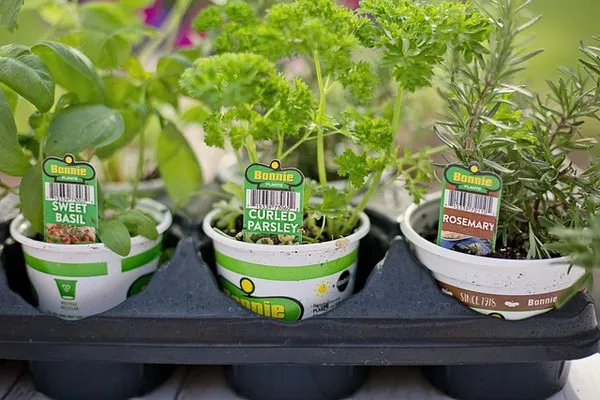Maintaining healthy and thriving plants requires a delicate balance of several factors, with water being one of the most critical. While water is essential for plant growth, overwatering can lead to detrimental effects that compromise the well-being of plants. Recognizing the signs of overwatering is crucial for any gardener or plant enthusiast. In this article, we delve into the various indicators of overwatering and offer insights into preventive measures and remedies.
The Importance of Proper Watering
Water is a fundamental element in a plant’s life cycle, playing a key role in nutrient uptake, photosynthesis, and overall growth. However, excess water can impede the availability of oxygen in the root zone, leading to a host of issues that impact the plant’s health. Overwatering not only drowns the roots but also fosters conditions that encourage root rot and the growth of harmful pathogens.
Indicators of Overwatering
Wilting: It may seem counterintuitive, but overwatered plants can exhibit wilting just like underwatered ones. This occurs because waterlogged soil deprives the roots of oxygen, hindering their ability to take up water. As a result, the leaves may appear droopy and lack vitality.
Yellowing Leaves: Overwatering can lead to a condition called chlorosis, where leaves turn yellow due to the impaired roots’ ability to absorb essential nutrients like iron. Yellowing often starts from the tips and edges of the leaves and progresses towards the center.
Leaf Drop: If you notice an excessive amount of leaves falling off your plant, overwatering might be the culprit. The roots’ inability to function properly can cause the plant to shed leaves as a survival response.
Mold Growth: Excess moisture creates an ideal environment for molds and fungi to flourish. If you spot mold growth on the soil surface or the plant’s base, it’s a sign that the soil is staying too wet.
Stunted Growth: While proper watering encourages healthy growth, overwatering can result in stunted development. The lack of oxygen and nutrient uptake disrupts the plant’s ability to thrive, leading to reduced size and vigor.
Foul Odor: An unpleasant, musty smell emanating from the soil indicates that the roots might be decaying due to waterlogged conditions. Healthy soil should have a neutral scent.
Slow or No New Growth: If your plant isn’t producing new growth or is growing at a significantly slower pace than usual, overwatering could be impeding its development.
Soggy Soil: One of the most evident signs of overwatering is soggy, waterlogged soil. Stick your finger about an inch into the soil; if it feels constantly wet, it’s a sign that you’re watering too much.
Preventive Measures
Preventing overwatering is the first line of defense in ensuring your plants’ well-being. Here are some tips to help you strike the right balance:
Understand Your Plant’s Needs: Different plants have varying water requirements. Research the specific needs of each type of plant you have and adjust your watering schedule accordingly.
Choose the Right Soil: Well-draining soil is essential to prevent water accumulation around the roots. Amend heavy soils with organic matter to improve drainage.
Use Proper Containers: Opt for containers with drainage holes to allow excess water to escape. Elevating the pots slightly by placing them on pot feet or bricks can further enhance drainage.
Watering Techniques: Instead of giving your plants small amounts of water frequently, adopt a deep watering approach. Water thoroughly and less frequently to encourage deep root growth.
Monitor Moisture Levels: Invest in a moisture meter to gauge the moisture content of the soil accurately. This can help you avoid watering when the soil is still damp.
Remedies for Overwatered Plants
If you’ve identified signs of overwatering in your plants, prompt action can often save them from further distress. Here’s what you can do:
1.Adjust Watering Frequency: Allow the soil to dry out between waterings. Stick to a consistent watering schedule based on the specific plant’s needs.
2. Improve Drainage: If the plant is in a container, repot it using well-draining soil and a pot with proper drainage holes. Ensure that excess water can escape freely.
3. Enhance Air Circulation: If possible, increase air circulation around the plant by placing it in a spot with good ventilation. This can help the soil dry out more quickly.
4. Prune Damaged Parts: Trim off yellowing or dead leaves to redirect the plant’s energy towards new growth. This also prevents the spread of diseases.
5. Repot with Care: If the root system is severely affected, consider repotting the plant into a slightly larger container with fresh, well-draining soil. Gently remove the old soil from the roots to promote recovery.
6. Elevate the Pot: If your outdoor garden is experiencing waterlogging, elevate the affected plants to prevent further water accumulation. You can also create small trenches to channel excess water away.
Conclusion
Proper watering is an art that every gardener must master. Overwatering, though common, can lead to severe consequences for your plants. Understanding the signs and symptoms of overwatering is essential for maintaining healthy and vibrant plants. By being vigilant, adjusting your watering practices, and implementing corrective measures when needed, you can ensure that your plants thrive in an environment conducive to their growth and well-being. Remember, a well-hydrated plant is a happy plant, but moderation is key.


